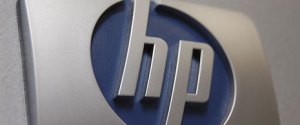
Hewlett-Packard has agreed to pay some $16.25 million (PDF) to the federal government to settle allegations that it won government contracts in part via lavish gifts—including Super Bowl tickets and yacht trips—given to Texas school officials.
HP was angling to win contracts to provide Internet connectivity and services for schools and public libraries through the E-rate program, one of four programs supported by the federal government Universal Service Fund to provide communications services to poor and rural communities. The Universal Service Fund collects about $8 billion a year through surcharges on telephone bills.
“Broadband is key to our children’s 21st century education,” said FCC Chairman Julius Genachowski, in a statement. “That’s why one of the FCC’s top priorities is making sure E-rate works to benefit students and libraries. Today’s settlement shows the extensive efforts of the FCC and DOJ to protect the E-rate program from waste, fraud, and abuse, and to deter misconduct in the future.”
The Federal Communications Commission and the Justice Department accused HP of defrauding the E-rate program by getting inside information and an unfair advantage in winning contracts that were put up for competitive bidding. The contracts involved totaled up to about $17 million in HP equipment and services. Most of the $16.25 million HP will be paying the government will go right back into the E-rate program. HP will also be subject to a compliance program run by the FCC to ensure the company “plays by the rules” going forward.
HP notes that incidents primarily occurred during 2004 and 2005, and the people involved are no longer employed by the company.
The E-rate fraud case is the latest settlement HP has reached with the federal government. In August, Hewlett-Packard reached a settlement with the Justice Department over kickbacks it allegedly paid to Accenture for work on government contracts. Those charges dated back to the same period.


